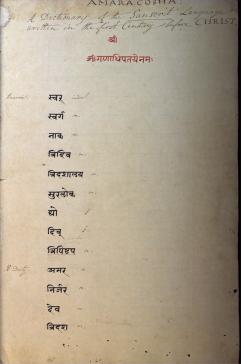This project explores the natural knowledge-making strategies of British colonial savants in early modern India including the noted orientalist, Sir William Jones (1746–1794), and the English East India Company medics Francis Buchanan (1762–1829) and William Roxburgh (1751–1815). The project tests the thesis that colonial natural history and the East India Company state were co-constititutive, and seeks to show that natural history was an expression of the manner in which the Company's commercial interests shaped the organization of governance.
The project places the histories of Britain and India within a unitary epistemological frame, tracing continuities, for example, between the pedagogical strategies followed at the University of Edinburgh's Medical School by Dr. John Walker (1731–1803) and the development of the colonial survey as a form of natural knowledge-making by his student Francis Buchanan; and between the sensibilist epistemology of European savants such as John Locke and Denis Diderot and the orientalist botany of William Jones. It brings together a variety of historiographical and science studies approaches to explore the micro-processes of information transfer between knowledge forms usually treated as incommensurable, and which are difficult to represent through structuralist binaries such as traditional/modern or poetry/prose. I analyze the translation strategies used by William Jones in developing his descriptions of Indian plants, and ask "What did Jones think he was doing in using the Sanskrit verse lexicon, the Amara Kōśa, as a source for natural historical information about India?"
The project also studies the plant and human objects constructed through the knowledge-making practices of these men of science. Roxburgh's Nerium tinctorium could have been a valuable commercial commodity, but it also had the potential to change the environment in ways that promoted governance. Buchanan studied the "loose-grained" granite of which the walls of Mysore were composed in situ and with great care. But he also brought the same observational practice to bear on the different caste groups encountered in his travels through south India. What did he think he was up to? And what can we learn about both early modern science and the political economy of the colonial state by analyzing his méthode d'observation?

